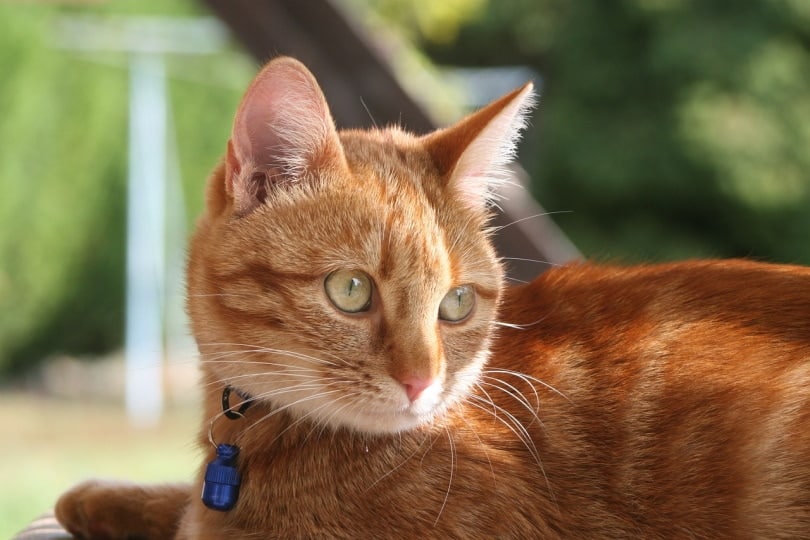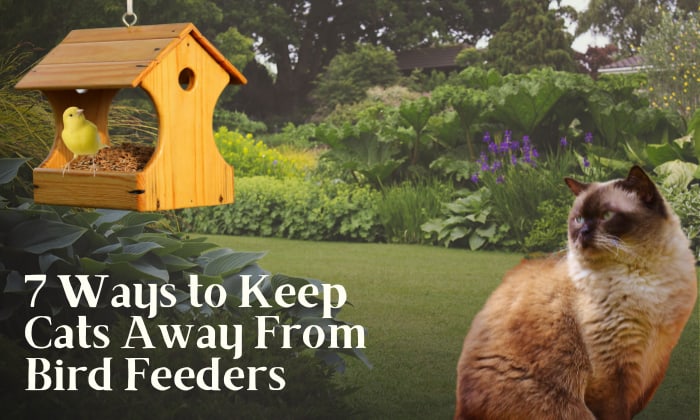For bird lovers, seeing a variety of feathered friends flocking to backyard feeders brings joy. But cats also know that feeders draw birds in as easy targets. Keeping birds safe from prowling cats takes a bit of clever thinking and proactive measures. With some simple techniques, you can outsmart cats and maintain a safe haven for local birds.
Set Up Feeders in Open Spaces
-
Position feeders in open areas of your yard, not directly against trees, fences or walls where cats can hide and stalk.
-
Open surroundings give birds a better chance of spotting cats and escaping Cats also have fewer ambush points,
Install Feeders on Slippery Poles
-
Metal poles or PVC pipes coated with petroleum jelly or flexible plastic tubing can prevent cats from climbing up.
-
You can also add decorative “squirrel baffles” to poles below feeders to block climbing
Surround Feeders with “Moats”
-
Ring feeder poles with a perimeter of pea gravel, pinecones or smooth stones that cats dislike walking on.
-
These small obstacles make it uncomfortable for cats to approach feeders while posing no risk to birds.
Use Dedicated Feeder Stands
-
Install feeders on a standalone post or trellis framed base rather than hanging them from trees, decks orporches.
-
Freestanding feeder poles are harder for cats to scale and don’t provide launching points.
Employ Motion-Activated Deterrents
-
Strategically place motion-sensor sprinklers, ultrasonic devices or SSSCAT compressed air sprayers.
-
These activate when cats come near and scare them away, training cats to avoid the area.
Make Feeders Wobble and Spin
-
Suspending feeders from flexible cords or multiple chains allows them to move unpredictably when bumped.
-
Cats have a harder time pouncing on moving targets. The instability also deters perching.
Block Access Below Feeders
- Push branches through chicken wire or install plastic mesh guards around feeder poles to prevent cats from climbing up below the feeders.
Use Natural Cat Repellents
-
Sprinkle dried herbs and spices like pepper, cinnamon, citrus peels or coffee grounds around feeders. Avoid direct contact with food.
-
These strong scents are unappealing and warn cats away. Reapply after rain.
Employ Physical Barriers
-
short fences, thorny shrubs or trellises with prickly vines can create a perimeter cats won’t cross to reach feeders.
-
Just ensure birds have open access points to enter the protected zone.
Adjust Feeder Locations
-
Periodically move feeders around your yard rather than leaving them in one spot cats can repeatedly ambush.
-
This adds an element of surprise that keeps cats guessing.
Use Feeders with Weight-Sensitive Perches
-
“Squirrel-proof” feeders close when something heavy (like a cat) touches the perch, protecting the seed.
-
Birds are light enough to keep feeders open. Look for bird-friendly designs.
Supervise Outdoor Time
-
For pet cats, leash walks and playtime in outdoor catios or runs prevent roaming to feeders while enjoying the outdoors.
-
Increased indoor play can also curb hunting instincts.
With smart planning and deterrents, you can let birds feed in peace while keeping neighborhood cats safe. Try different remedies to find the right balance for your yard. A little innovation goes a long way in harmonizing wildlife.
The 6 Tips for Keeping Cats Away from Bird Feeders
Now that we know what not to do, let’s look at six ways to block cats from getting to bird feeders.
What NOT to Do
Before we look at the six proven methods, let’s talk about what not to do. It’s just as important to know what not to do as it is to know what to do, especially when what most people would do is dangerous for the cat or the bird.

Many websites recommend placing mothballs around the bird feeders. Cats and most mammals do not like the smell of mothballs. As a result, the mothballs will deter most cats from approaching the bird feeder.
The issue with this method is that it is dangerous for the cats, your yard, and other creatures. If your cat were to ingest the mothballs or be exposed to them long-term, they could develop serious illnesses. The same is true for other animals. Do not place mothballs in an area where cats and other animals can ingest or be exposed to them.
Petroleum jelly is another substance used to deter cats, but it can be dangerous. The idea behind the petroleum jelly method is that it prevents cats from climbing up the feeder pole. Looking solely at the cats, this is a safe and effective method.
The issue with adding petroleum jelly to bird feeders is that it can get on the bird’s feathers. It can hinder the bird’s ability to fly, eat, and escape from other predators. Don’t add petroleum jelly to bird feeders to protect the birds.

Bell collars are another commonly recommended method for protecting birds from prying cats but are largely ineffective. The idea behind bell collars is that they alert birds of the cats. Unfortunately, most birds don’t notice the sound, and you’ll waste money on the bell collar. Although this method isn’t unsafe for the cats or birds, you don’t want to waste your money.
Fences are another safe but ineffective option for keeping cats away from bird feeders. As you probably know, cats are great at climbing and jumping fences. In most scenarios, a fence isn’t going to keep a cat out. Another reason you might want to fence in your yard is to keep cats from getting to your bird feeders. But you shouldn’t waste your money on a fence just to do that.
Garden Maintenance : How to Repel House Cats From Outdoor Bird Feeders
FAQ
What deters cats but not birds?
How to keep cats away from bird houses?
How do I stop my cat from eating my bird?
How do I protect my bird feeder from cats?
One effective way to protect your bird feeders from cats is by using a citrus oil repellent. Cats generally dislike the smell of citrus fruits, and you can take advantage of this by spraying a solution around your bird feeder. You can either use commercially available products or create your own solution by boiling orange peels in water.
How do you hang a bird feeder?
You don’t have to place your bird feeder on a tall pole or a pedestal in the middle of your lawn. You can also hang it from a sturdy tree limb. Just be sure that the limb is at least 10 feet off the ground, so you can place the feeder about 5 feet off the ground. And add a baffle on top, so cats and squirrels can’t join the birds you want to feed.
How to keep cat from killing birds?
That said, the best way to keep cat from killing birds is by keeping the feline at least 10 feet away from bird bath and feeders. Therefore, a tall pole is always a better option. Even in the best-case scenario, a high location of the bird feeder may not always equate to a predator-free place.
How to get rid of bird feeder cats?
In other words, you can manipulate the scent around the bird feeder cats usually approach by using bird friendly cat repellent. The most effective ones are those with strong and sharp scents, such as orange, lime, cinnamon, and vinegar.
- A Complete Guide to Caring for Yuki Cherry Blossom Shrub - January 23, 2025
- Identifying Red Hot Poker Seeds: What to Look For When Harvesting Torch Lily Pods - January 23, 2025
- A Complete Guide to Harvesting Evening Primrose Seeds - January 23, 2025

